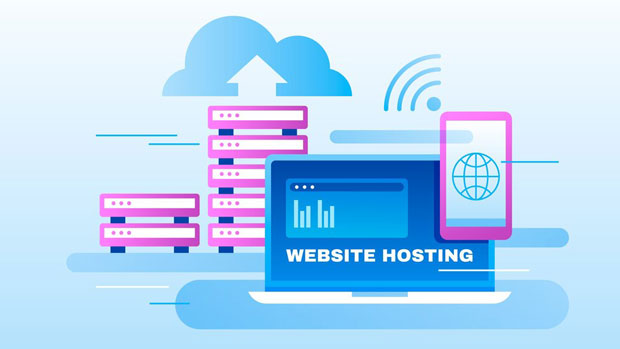In modern corporate environments, managing network traffic and ensuring secure and efficient browsing is paramount. Proxies are widely used in enterprises to control access to external resources, protect sensitive data, and optimize network performance. Among various proxy solutions, Proxypy Web Proxy stands out due to its robust features tailored for enterprise needs. This article explores the application of Proxypy Web Proxy in corporate proxies, highlighting its functionalities, benefits, and how it enhances security, monitoring, and performance. Introduction to Proxypy Web ProxyProxypy Web Proxy is a powerful tool that facilitates secure web traffic management within organizations. By acting as an intermediary between internal users and the internet, it ensures that all incoming and outgoing data passes through a controlled channel, which helps in preventing unauthorized access and securing sensitive corporate information. In addition, it helps optimize internet usage by caching frequently accessed data and controlling bandwidth usage.Key Features of Proxypy Web ProxyProxypy Web Proxy offers a range of features that make it suitable for enterprise environments. These include:1. Data Encryption: Proxypy ensures that data transferred between the user and the internet is encrypted, making it difficult for unauthorized parties to intercept sensitive information.2. Access Control: Administrators can define specific access policies, allowing or blocking certain websites or resources based on the business’s needs.3. Traffic Monitoring and Reporting: Proxypy provides comprehensive analytics and logs, allowing IT administrators to monitor user activity, identify threats, and ensure compliance with internal policies.4. Caching: By caching frequently accessed websites and resources, Proxypy improves network efficiency, reducing bandwidth consumption and speeding up browsing for users.5. Bypass Restrictions: It enables users to access otherwise restricted content by circumventing geographical or network-based restrictions, useful in regions with internet censorship.Benefits of Using Proxypy Web Proxy in Enterprises1. Improved Security: Proxypy enhances corporate security by acting as a barrier between the internal network and the internet. It can block malicious websites, prevent data leaks, and safeguard against cyber threats, such as phishing attacks and malware.2. Optimized Network Performance: With caching capabilities, Proxypy reduces the load on the company’s internet connection by storing copies of frequently visited websites. This not only improves load times but also minimizes bandwidth consumption, ensuring smoother network operations.3. Compliance and Monitoring: Corporations must adhere to various industry regulations regarding data privacy and security. Proxypy helps businesses stay compliant by providing detailed traffic reports and logging features, which can be used for audits and monitoring purposes.4. Reduced Bandwidth Costs: By optimizing traffic and caching content, Proxypy helps reduce overall bandwidth usage, which can significantly lower operational costs for large organizations with high internet traffic.5. User Productivity Management: Proxypy enables businesses to block distracting websites or applications, ensuring that employees stay focused on their work tasks. It also allows administrators to limit the bandwidth allocated to non-business-related activities.How Proxypy Web Proxy Enhances Security in EnterprisesSecurity is one of the foremost concerns in today’s digital landscape, especially for businesses handling sensitive data. Proxypy Web Proxy plays a vital role in enhancing security within corporate networks. Here's how it strengthens enterprise security:1. Blocking Malicious Content: Proxypy’s filtering features can block access to known malicious websites, preventing employees from inadvertently visiting dangerous sites that may contain malware or phishing scams.2. Protection Against Data Leaks: By routing all internet traffic through the proxy server, sensitive data is protected from being exposed to external threats. Proxypy ensures that any communication between the internal network and external websites is encrypted, providing an additional layer of protection.3. Comprehensive Threat Detection: Proxypy continuously monitors internet traffic for unusual patterns that may indicate potential threats, such as data breaches or attempted hacking. The system can alert administrators, allowing for swift intervention.4. Safe Access for Remote Employees: Proxypy ensures that employees working remotely can access company resources securely. The proxy server creates a secure tunnel for internet traffic, ensuring that employees can access the network without compromising security.Traffic Management and MonitoringIn large organizations, managing network traffic and ensuring optimal performance is essential. Proxypy Web Proxy provides robust traffic management capabilities, allowing IT administrators to monitor and control internet usage within the organization. Some key aspects include:1. Real-Time Traffic Monitoring: Administrators can view live data about network traffic, including the websites visited, data volumes, and user activities. This helps in identifying bottlenecks or inefficient usage.2. Detailed Reporting: Proxypy provides comprehensive logs that capture all internet traffic activities, which can be invaluable for troubleshooting, audits, and compliance purposes.3. Bandwidth Allocation: Proxypy allows administrators to allocate bandwidth based on priority. For example, mission-critical applications can be allocated higher bandwidth, while non-essential services may have limited access to prevent network congestion.4. Enforcing Usage Policies: By setting usage policies, organizations can restrict access to certain websites or applications during working hours, promoting a focused work environment and preventing distractions.Optimizing Network PerformanceOne of the key advantages of using Proxypy Web Proxy is its ability to optimize network performance. Enterprises with large amounts of internet traffic often face challenges related to speed and bandwidth consumption. Proxypy helps mitigate these issues through:1. Web Caching: Proxypy caches frequently accessed websites, which means that repeated visits to the same website do not require fetching the data from the internet every time. This reduces latency and improves browsing speed for employees.2. Load Balancing: Proxypy can distribute web traffic across multiple servers, ensuring that no single server becomes overloaded. This balances the network load and prevents slowdowns, particularly during peak usage times.3. Reduced Latency: Caching and load balancing result in reduced latency, ensuring that users can access websites faster. For businesses that rely on cloud-based applications or data-intensive services, this improvement in performance can lead to increased productivity.ConclusionProxypy Web Proxy offers a powerful and comprehensive solution for enterprises seeking to enhance their network security, optimize performance, and improve traffic management. With its robust features, including encryption, access control, caching, and detailed reporting, Proxypy helps organizations protect their data, ensure compliance, and reduce operational costs. By implementing Proxypy, businesses can create a secure, efficient, and optimized network environment that supports both remote and on-site employees while minimizing risks associated with internet usage.
Aug 11, 2025



































































